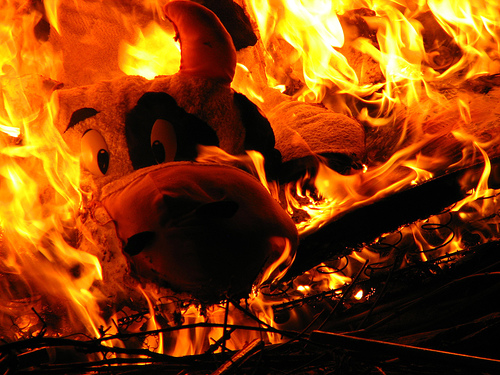Veterinarian Warns of Summer Anthrax
The summer months typically see an increased number ofanthrax cases, so experts are warning livestock producers to be vigilant to reduce transmission to livestock and people.
“The hot summer months of July and August are when we see most of our anthrax cases in the upper Great Plains,” said Charlie Stoltenow, veterinarian at the North Dakota State University (NDSU) Extension Service.
“It’s well known that it requires certain climatic conditions for anthrax to germinate. In this area, usually July and August is when we have the most favorable conditions. Sometimes it doesn’t happen. No one understands what really causes it to trigger in nature. It seems hot, humid weather helps it grow--it may be coincidence, or maybe there’s a correlation,” he said by phone on Friday. Anthrax cases occur in the Great Plains almost every year.
Anthrax is a naturally occurring bacterium. When exposed to air it turns to spores that are hearty enough to survive in the environment for decades. Flooding and heavy rainfall spread spores over wide areas.
In both humans and cattle, contact with anthrax spores can be fatal.
Anthrax occurs naturally in rural areas and along cattle trails, but it's probably more well known for being the agent mixed with white powder to launchbiological attacks through the mail in 2001 and anattack on former Pakastani Prime Minister Yousaf Raza Gilanias recently as October.
Inhalation anthrax has a 75 percent mortality rate, even with antibiotic treatment, according to The Department of Health and Human Services. If spores enter the body through an open wound or they're ingested, (by eating meat from anthrax infected animals) the survival rate is higher.
NDSU suggests livestock be vaccinated at least once a year, before the onset of anthrax season. That's especially important for herds within six miles of a prior case or in areas that have experienced recent flooding.
“If anthrax is detected in a herd, producers should move the herd immediately to a new pasture away from where dead animals were found to prevent other animals from getting infected,” Stoltenow said in anNDSU news release. People shouldn’t try to move animals that have died from anthrax. Instead, they should beburned on the spot. Any contaminated soil should be piled on top and burned too, Stoltenow said.
Past recommendations said an infected carcass could be buried and covered with lime, but recent research suggests this practice may have actually been giving anthrax a longer life.
“It turns out that anthrax can actually live longer in the presence of calcium…. We had actually been propagating it all these years by covering it with barn lime,” Stoltenow said.
“When you’re burning, you’re actually getting rid of the spore. There’s no spore formed in the carcass unless the carcass is torn open. And it takes about four hours for an anthrax bacterium to create a spore, so what we want to do is create a fire so hot, right away, that we never give it a chance to form a spore.”
